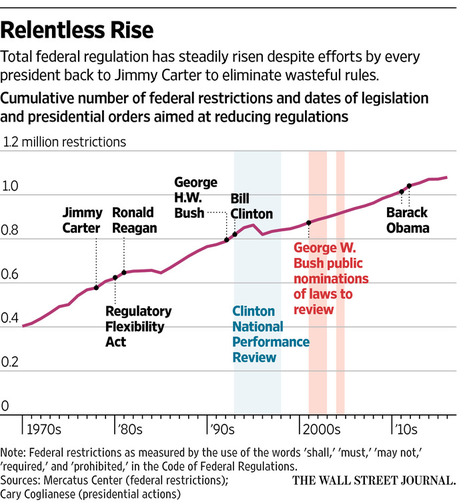(p. B1) CHICAGO — A growing number of economists have found that many cities and states have considerable room to raise the minimum wage before employers meaningfully cut back on hiring.
But that conclusion may gloss over some significant responses to minimum-wage increases by individual employers, according to two new studies. And those reactions may, in turn, raise questions about the effectiveness of the minimum wage in helping certain workers.
The findings, presented over the weekend at the annual meeting of the American Economic Association, the nation’s premier gathering of academic economists, come as many cities and states are raising their minimum wages. California and New York last year approved gradual increases to $15 per hour. Proponents argue that raising the minimum is one of the most practical ways of improving living standards for the working poor and reducing inequality.
To test that proposition, John Horton of New York University conducted an experiment on an online platform where employers post discrete jobs — including customer service support, data entry, and graphic design — and workers submit a proposed hourly wage for completing them.
Mr. Horton, working with the platform, was able to impose a minimum wage at random on one-quarter of about 160,000 jobs posted over roughly a (p. B4) month and a half in 2013. If a worker proposed an hourly wage that was below the minimum, the platform’s software asked him or her to raise the bid until it cleared the threshold. In some cases the minimum wage was $2 per hour, in some cases $3, and in some cases $4.
At first glance, the findings were consistent with the growing body of work on the minimum wage: While the workers saw their wages rise, there was little decline in hiring. But other results suggested that the minimum wage was having large effects. Most important, the hours a given worker spent on a given job fell substantially for jobs that typically pay a low wage — say, answering customer emails.
Mr. Horton concluded that when forced to pay more in wages, many employers were hiring more productive workers, so that the overall amount they spent on each job changed far less than the minimum-wage increase would have suggested. The more productive workers appeared to finish similar work more quickly.
For the full story, see:
NOAM SCHEIBER. “Studies Find Higher Minimum Wage May Have Losers.” The New York Times (Weds., JAN. 11, 2017): B1 & B4.
(Note: the online version of the article has the date JAN. 10, 2017, and has the title “Higher Minimum Wage May Have Losers.”)
The paper that Horton presented at the 2017 AEA meetings in Chicago, is:
Horton, John J. “Evidence from a Minimum Wage Experiment.” Working Paper, Leonard N. Stern School of Business. New York University, Jan. 10, 2017.
Update added on Thurs., Aug. 21, 2025: Horton’s paper was eventually published as:
Horton, John J. “Price Floors and Employer Preferences: Evidence from a Minimum Wage Experiment.” American Economic Review 115, no. 1 (Jan. 2025): 117–46.
 Source of graph: online version of the WSJ article quoted and cited below.
Source of graph: online version of the WSJ article quoted and cited below.
